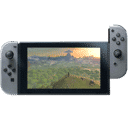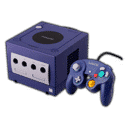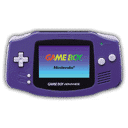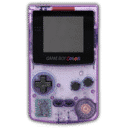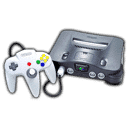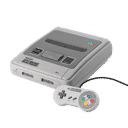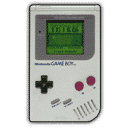
Summary:
Pokémon Pokopia brings a laid-back life simulation to Switch 2 with a charming twist: you play as a Ditto that’s taken on a human shape, learning Pokémon moves to transform a rough patch of land into a thriving community. We’re getting a global launch on March 5, 2026, with digital pre-orders opening November 12, 2025 and physical pre-orders (as a game-key card) starting November 13, 2025. The key card requires a download and at least 10GB of free space, which is worth planning for if your console is full of screenshots or older saves. Beyond dates, the appeal is clear: shape nature with moves like Leafage or Water Gun, plant and harvest, build homes, and invite Pokémon—and friends—into a world that runs on real-time days, nights, and weather. Below, we cover the release plan, editions, storage needs, core gameplay, co-op options, Switch 2 benefits, starter strategies, and the most useful pre-order tips so you can jump in with confidence.
Pokemon Pokopia is confusing ….
Pokémon Pokopia finally puts a firm date on our calendars: March 5, 2026. That timing isn’t just a placeholder; it’s the day the first Pokémon life sim built natively for Switch 2 rolls out worldwide. The pitch is refreshingly simple: take a quiet plot of land and, with the help of familiar moves, coax it into a green, lively habitat where Pokémon and players can actually live. If you’ve ever looked at tall grass in Pokémon and wished you could nurture it, arrange it, and watch a whole ecosystem appear, that’s the vibe here. Crucially, this isn’t a marginal spinoff; it’s positioned as a headline release with proper support, visibility, and a clean global date, giving everyone the same starting line for sharing discoveries and trading tips.
How pre-orders work across digital and physical
Pre-orders are split by format and open on different days, so timing matters. The digital version hits first, opening on November 12, 2025 at midnight (local storefront timing), which is ideal if you want pre-load convenience and instant access on launch morning. The physical format follows on November 13, 2025 and comes as a game-key card instead of a traditional cartridge. That means you’ll still download the full game, but you’ll have a boxed item to display or gift. If you’re planning for holiday presents, the key card format is perfect: it wraps well, looks the part, and still lands the digital-ease benefits when March rolls around. Keep an eye on retailer pages for any early purchase bonuses; those tend to be limited by region and stock.

Game-key card explained and storage requirements
Pokopia’s physical release is a game-key card. In practice, that’s a scannable card inside a box that redeems the software, followed by a download and installation on your Switch 2. The upside is access parity with the digital version; the potential drawback is storage, since you’ll need at least 10GB free just to get started and possibly more as updates arrive. If you’ve been capturing lots of 60 fps gameplay clips or you’re hoarding big RPG installs, consider a quick clean-up or grab a fresh microSD in advance. It’s a small bit of prep that saves scramble later. And if you bounce between docked and handheld, installing to fast storage makes loading into larger builds feel snappier and keeps the cozy flow intact.
The premise: a Ditto living among Pokémon
You’re a Ditto who’s taken on a human form, which instantly shapes how we play and how the world reacts. Instead of a trainer commanding partners, you’re a neighbor learning from them—watching moves in action, picking up their utility, and applying them to real problems. It’s disarmingly sweet: grow grass to welcome new species, irrigate dry soil to coax crops from a patch of earth, or trim trees to make way for a path. That approach flips the usual “battle first” loop into a quieter rhythm built on observation and care. Because your role sits between human and Pokémon, moments feel personal—like you’re earning the trust of the land as much as the creatures that roam it.
Crafting with moves and shaping the land
Rather than picking up generic tools, you gain access to actions by experiencing the moves of nearby Pokémon. See a Bulbasaur use Leafage and you can encourage new growth; catch Squirtle watering and you’ll hydrate wilted grass or young crops; find a slicing move and suddenly lumber management becomes efficient. Because moves are the verbs of this world, they tie progression to discovery. It nudges you to roam, observe, and experiment, which keeps the cozy pace without making it feel aimless. Expect these mechanics to dovetail with crafting benches, simple recipes, and structure blueprints. Think fences for keeping a tidy farm, cozy homes for visiting Pokémon, and helpful stations that make day-to-day upkeep feel satisfying instead of fussy.
A living world with time, weather, and seasons
Pokopia’s clock runs with the real world, so morning looks like morning and nights are actually dark, with weather rolling through on its own cadence. That might sound cosmetic, but it feeds everything else: watering matters more in dry spells; certain Pokémon appear at dusk or during rain; and harvest schedules become “real,” encouraging small sessions when you have ten spare minutes. It’s the kind of design that respects your time without turning tasks into chores. The secret sauce is how these systems layer: a foggy dawn invites exploration; a breezy afternoon makes leaf-spreading feel productive; and a sudden shower turns a mundane trek into a moment that brings out a species you’ve never met before. It’s quiet, but it’s alive.
Playing together: local and online options
Pokopia supports solo play while opening the door to shared sessions with up to four players via local or online play. That’s perfect for dividing tasks—one person shapes fields, another scouts for new species, a third handles building placement, and a fourth decorates. Shared play elevates small wins into communal events: the first time rain hits a freshly planted grove you tended together, it lands. Expect a simple invite flow, a clean handoff between hosts and visitors, and friendly safeguards that keep a shared space from turning chaotic. Even in solo runs, the knowledge that your town can welcome friends gives everything a social thread, which is the heart of long-running cozy worlds.
Building towns, progression, and long-term goals
Your day-one patch grows into a neighborhood and eventually something bigger: a place that attracts more Pokémon, supports more activities, and looks uniquely yours. Progression isn’t about speed; it’s about taste and intention. Maybe you want an orchard-lined hill dotted with lamp posts, or a shoreline garden that glows at night. As your move list expands, pathways open—literally, when you finally have the means to shape terrain. Expect gentle milestones that unlock recipes, structures, and maybe light challenges that reward stewardship instead of brute force. That long-term loop—improve, invite, enjoy—keeps you coming back for “just one more tidy-up” sessions that somehow fill an hour without stress.
How it compares to other cozy builders
Fans will spot echoes of Animal Crossing’s neighborly charm and Dragon Quest Builders’ satisfying block-by-block progress, with hints of Minecraft’s environmental logic. The difference is Pokémon DNA running through every system. Moves aren’t gimmicks; they’re the tools that make the land breathe. Encounters aren’t just for battles; they’re sources of knowledge. The result feels less like a mash-up and more like a calm interpretation of what living with Pokémon could be if battling wasn’t the main goal. If you’ve wanted a life sim where Pikachu isn’t just a mascot but a neighbor whose habits teach you something useful, Pokopia is that rare pitch that actually benefits from the license rather than simply wearing it.
Who’s making it and what Switch 2 brings
Pokopia comes from The Pokémon Company alongside Game Freak and Koei Tecmo, which is noteworthy: Game Freak’s world knowledge meets Koei Tecmo’s production chops, a pairing that bodes well for systems that need to run smoothly at scale. Built for Switch 2, it should take advantage of faster storage, improved CPU, and a modern rendering pipeline, all of which help a sim with growing towns, dynamic weather, and lots of active entities on-screen. The biggest win you’ll feel is consistency—quicker loads when hopping into a session and fewer hitches when your settlement gets busy. It’s the kind of behind-the-scenes muscle that keeps cozy play actually cozy.
Performance expectations and accessibility
While final performance targets will come closer to launch, Switch 2’s baseline makes a strong case for responsive controls and stable play even as your town gets denser. Expect sensible accessibility toggles: text sizing that respects handheld play, UI contrast that remains readable at a glance, and options for motion sensitivity if weather effects or particle-heavy moves become visually busy. Because the world tracks real-time, parental controls matter too; a pause-friendly loop and safe online options should make it family-friendly without friction. If you plan to share the console, separate user profiles will help keep each person’s town distinct and drama-free.
Buying advice, times, and regional notes
If you’re in Europe, the digital pre-order window opening on Wednesday, November 12, 2025 means late-night storefront updates rolling into the morning. The physical pre-orders begin Thursday, November 13, 2025 and may include retailer-specific goodies in some regions. Because the physical is a key card with required download, choosing digital becomes a simple space decision: if you’re already comfortable with eShop purchases, go digital; if you want something to wrap or display, go key card but budget the storage now. Either way, the launch date is the same, and both versions should receive identical updates. As always, snag pre-orders from official storefronts or reputable retailers to avoid third-party key headaches.
Smart starter tips for day one success
Before March, tidy your storage and leave a comfortable buffer above the 10GB minimum—updates and screenshots add up. On day one, resist spreading builds across the entire map; cluster early structures so move-based maintenance is efficient. Prioritize a reliable water source and a leafy patch to encourage early species variety; that combo accelerates move learning and opens crafting recipes faster. When friends visit, assign roles for a short session—one hour of focused co-op can overhaul a space more than three hours of solo tinkering. Finally, keep photo spots in mind; cozy worlds thrive on sharable moments, and Pokopia’s lighting and weather will surprise you with scenes worth capturing and posting.
Conclusion
Pokémon Pokopia looks like a confident step into slower, more reflective play without losing the series’ identity. The calendar is friendly—pre-orders this week and a clear March 5 target—and the key card format turns the “physical versus digital” choice into a simple preference call. Most of all, the Ditto premise sets the tone: you’re not commanding from above; you’re learning from neighbors and shaping a place together. If that’s the future of living with Pokémon, it’s a future that feels warm, inviting, and ready to grow with us over months and seasons—exactly the kind of world that keeps a community buzzing long after launch day screenshots fade.
We’re set for a calm, collaborative Pokémon world that rewards curiosity and care. Mark March 5, 2026, choose your pre-order path this week, clear at least 10GB of space, and start sketching your first grove, garden, or waterfront path. Whether you play solo or invite friends, Pokopia’s rhythm encourages small, satisfying sessions that stack into something personal and lasting. It’s a fresh lens on the brand that finally answers a simple question: what if living with Pokémon was the whole point?
FAQs
- When does Pokémon Pokopia release?
- It launches worldwide on March 5, 2026 on Nintendo Switch 2.
- When do pre-orders start?
- Digital pre-orders open November 12, 2025, and physical (game-key card) pre-orders begin November 13, 2025.
- What’s the storage requirement?
- The key card requires a download with at least 10GB of free space, with more likely needed for updates over time.
- Is there multiplayer?
- Yes. You can play solo or with up to four players via local or online play, making group building and exploration easy.
- What makes Pokopia different?
- You’re a Ditto in human form who learns Pokémon moves to shape the land—crafting, farming, and building a community instead of focusing on battles.
Sources
- トップページ | 『ぽこ あ ポケモン』公式サイト, The Pokémon Company, November 11, 2025
- 『ぽこ あ ポケモン』の発売日が2026年3月5日に決定。DL版が11月12日0時、パッケージ版(キーカード)が11月13日から順次予約開始, Dengeki Online, November 11, 2025
- Switch2『ぽこ あ ポケモン』2026年3月5日発売決定。11月13日23時には特別映像が公開!, Famitsu, November 11, 2025
- Pokémon Pokopia Gets March 2026 Release Date, Brand New Trailer Coming This Week, Nintendo Life, November 11, 2025
- Nintendo Switch 2 ソフト『ぽこ あ ポケモン』の発売日が、2026年3月5日(木)に決定!, Denfaminicogamer, November 11, 2025


